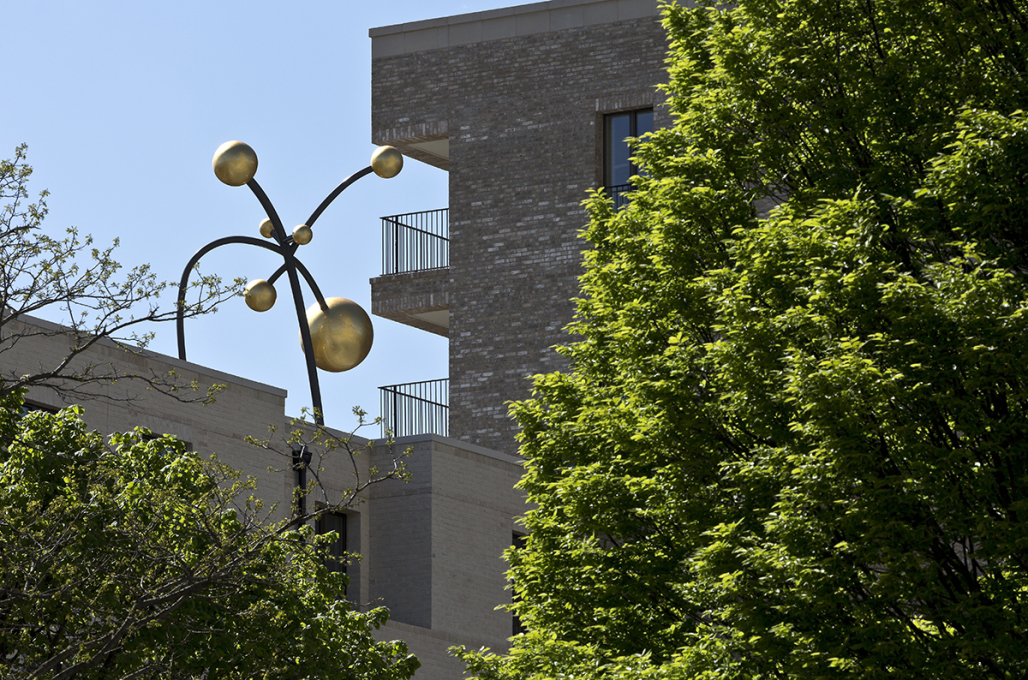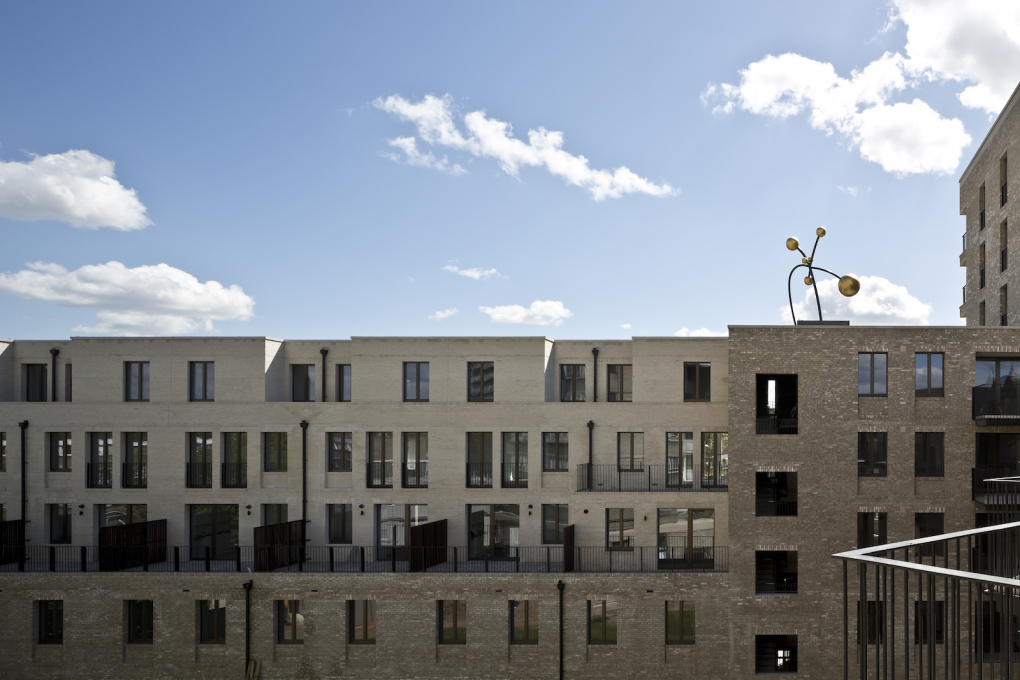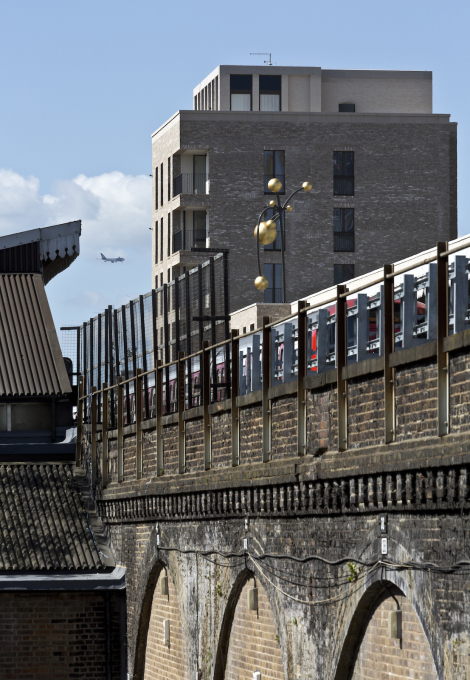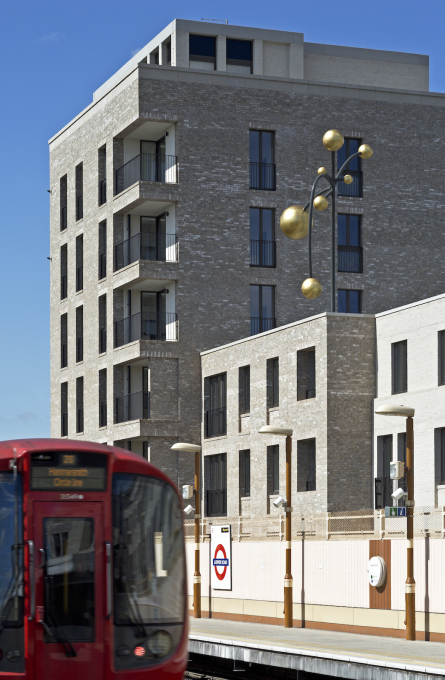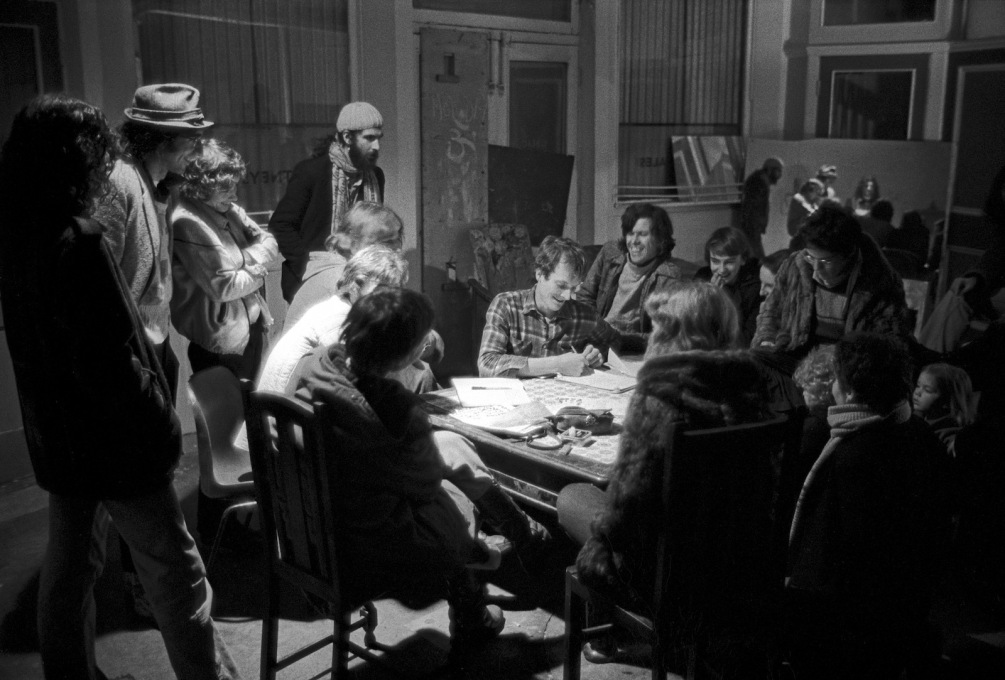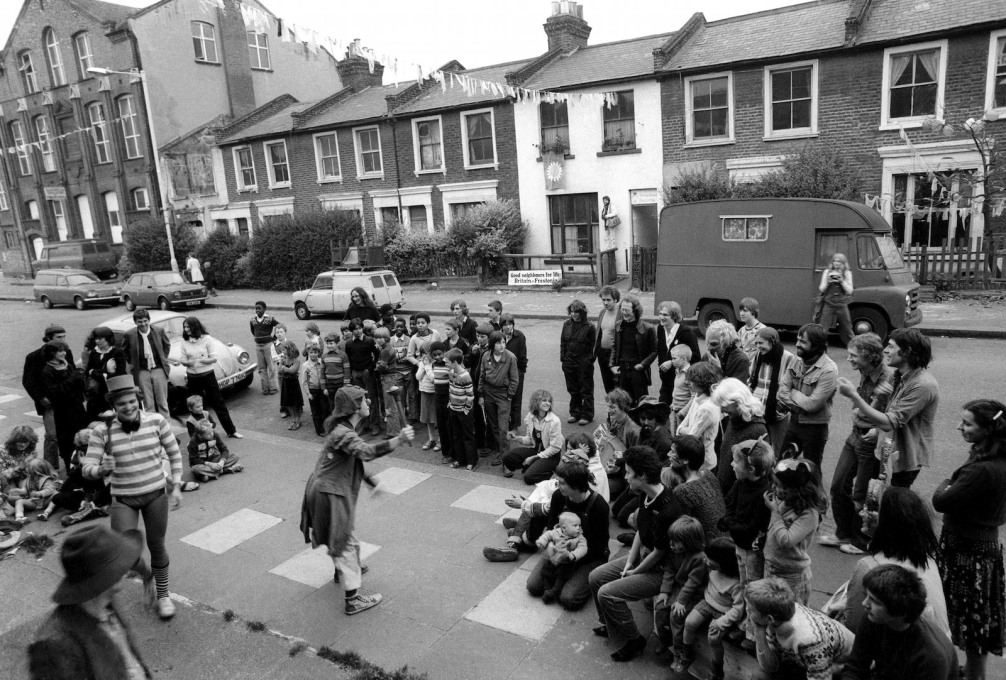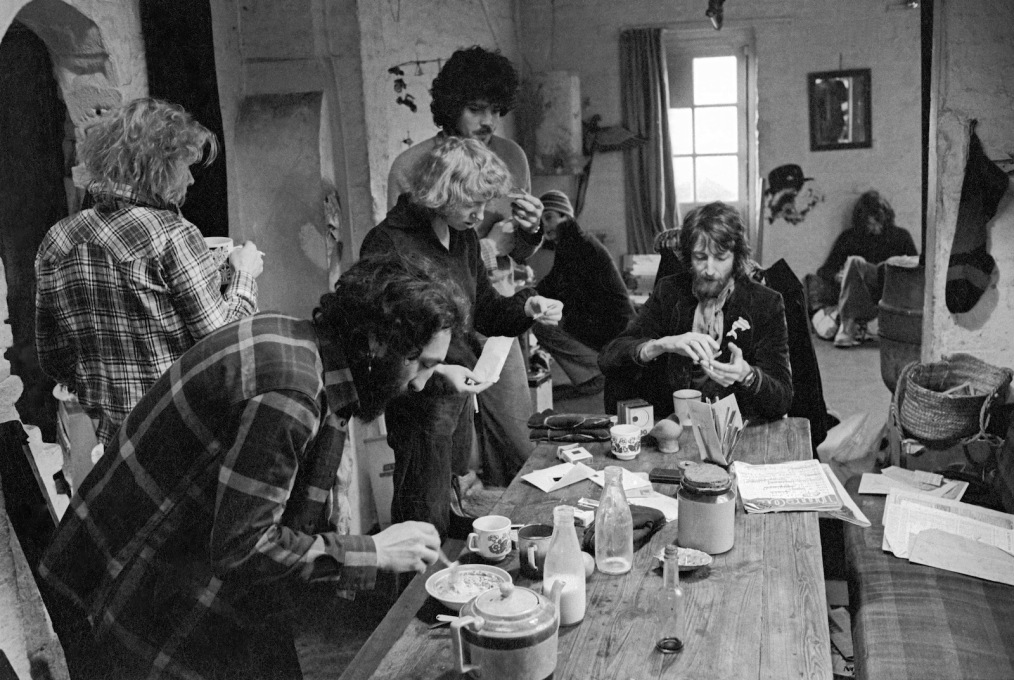In 1977, squatters in West London seceded from the UK and formed their own nation, Frestonia, to avoid eviction. Nearly forty years later, with London a similar hotbed of housing issues – if this time driven by too much money rather than too little – artist Nathan Coley has sought inspiration from Frestonia – its ideals and its failings – for his latest project at a new Peabody development in the same neighbourhood.
Facing eviction by the Greater London Council in 1977, the residents of Freston Road took unorthodox measures. First, they became one family: all 120 residents adopted the surname Bramley with the aim of forcing the council to re-house them collectively. Then they put in an application for nationhood to the United Nations and seceded from the United Kingdom. The Free & Independent Republic of Frestonia was born, complete with its own art gallery, newspaper and postage stamps. For six years the micronation struggled against eviction and resettlement while playing host to a diverse community of families, social misfits and the occasional celebrity (The Clash recorded their 1982 album Combat Rock at the Frestonian Peoples' Hall), before the Bramley Housing Co-op was formed and, after negotiating with the GLC, became a cooperative housing scheme together with the Notting Hill Housing Trust in 1983. This remarkable chapter in London housing history provided Glasgow-born artist Nathan Coley with the stimulus for his work: to the Bramley Family of Frestonia which is sited at a new Peabody housing development, designed by architects Haworth Tompkins, a stones throw from Freston Road. uncube's George Kafka spoke to Nathan Coley about his project and how it revolves around community, public art and apples.
Nathan Coley how did this project come about?
Initially I didn’t know either Haworth Tompkins or the Peabody Trust, but they both knew my work so we met just after they had received planning permission. It was basically a blind proposal in the sense that they didn’t know what they wanted and I didn’t know what I was going to do. For about 18 months I struggled to get started. I went down for site visits and conversations and I would feel like when I was back at school and hadn’t done my homework. There was no reason why I shouldn’t have been applying myself; it was a good project, there was some money and good people, but I just couldn’t get started. Then I found out about the history of Frestonia which had been nearby the new development and that became the real starting point.
Your work often draws from the histories of built environments – where does this interest come from and what drew you to Frestonia?
I’m fascinated by how the built environment manifests our social values and beliefs. So when I found out that in what is now the richest council area in Europe there was this hippy squatted community in the 1970s, I saw something really relevant to London today. If you look at the fact that 35% of new build houses in London are getting bought off-plan and will never be lived in, that’s a fascinating phenomenon. It would be really easy to fall into romantic nostalgia about London in the 70s but once I met the photographer Tony Sleep, who photographed a lot of the residents of Frestonia, I realised it was not this utopia, but actually somewhere tough, dangerous and cold. I felt it would be interesting to make a work that somehow made a monument to them. A monument to something that failed.
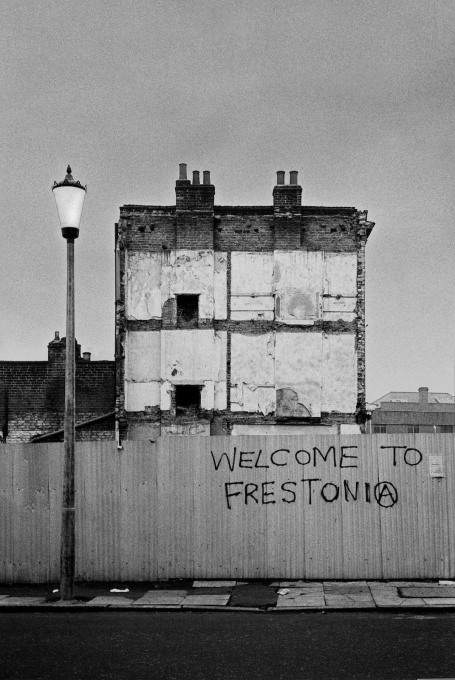
How did you arrive at the concept for the final pieces?
The project takes two narratives, the narrative of Frestonia and the narrative of the Bramley apple, which of course is a bit surreal and a big conceptual jump from this pseudo-utopian community, but the link is in the names; I have a fascination with language. There’s a street in West London called Freston Road which someone obviously named for whatever reason hundreds of years before, and then because of that they called themselves Frestonia. Adjacent to that is Bramley Road and when the residents of Frestonia had to rename themselves to force the council to re-house them collectively they looked around and Bramley was there. Of course, that’s not the first time that name has been used to identify something so I just took this conceptual jump to the Bramley apple. There were interesting ideas there, relating to the Garden of Eden, the apple as the forbidden fruit, and the mother tree as something which starts a community. So I had to come up with an object, or a gesture, to bring together those two narratives as something new.
Aside from the rooftop sculpture you’ve published a book and produced 112 smaller versions of the sculpture for this project – how do these three work together?
The big sculpture on the roof is the kind of classic, public art object, which I think very much looks like it could have been made in 1975, at the time that the community was there, it’s got a kind of out-of-time vibe to it.
Then there’s the lovely gesture of the wee trees that get handed out as house warming presents. This makes the project work on a different dynamic. I managed to persuade Peabody to hand over the wee trees when the new tenants sign the lease. They are given an object that relates to this bigger object on the roof and with it comes the knowledge that your neighbour has one too. It’s something shared by everyone in this new community. Peabody got worried about who owns the small sculptures and what happens if someone wants to give it away or sell it. I told them it’s a house warming present, they can do whatever they want with it!
And finally there’s the book, which is the glue that ties it all together. The books are handed out to the local community, the residents and everyone that was involved with it. I signed two of them at the weekend that are being sent to Paris to two people that were in Frestonia in the 70s. One of them was the Dutch foreign minister and the other was the French foreign minister.
What was your experience of working with Haworth Tompkins?
Throughout the process they were really open to what the finished project could be – they didn’t even have a place in mind. Very often with these things the architects or developers will have identified a wall, or a courtyard, or a place where the art needs to be in order to get the project through planning permission. At best the artwork is assimilated into somebody else’s aesthetic or somebody else’s discourse, and at worst it looks like a piece of decoration. I get invited to do that all the time, but I never do because it’s a trap.
But I think Haworth Tompkins have done very well with the building in terms of fitting it in, getting the right formula of what’s needed and what’s missing from the site: a jigsaw which is super-tough to get half decent. I don’t know if the architecture is good, but to be honest that’s irrelevant to me. What’s important to me is the fact that it’s a housing unit and they’re trying to accommodate a variety of people on a strange, condensed location. That and I think tonally it’s a good backdrop to the sculpture!
– Interview by George Kafka
– Nathan Coley is an artist based in Glasgow, Scotland. He studied at the Glasgow School of Art and was shortlisted for the Turner Prize in 2007 for his exhibition at Mount Stuart, Isle of Bute, the public installation Camouflage Church, Santiago de Compostela, Spain and his contribution to the group exhibition Breaking Step – Displacement, Compassion and Humour in Recent British Art at the Museum of Contemporary Art, Belgrade, Serbia. He is represented by Parafin, London. studionathancoley.com
Commissioned artwork funded by Peabody, London for the Silchester (More West) housing development, Kensington and Chelsea, London. Realised in collaboration with Haworth Tompkins Architects London; Mace, London; Icon Fabrication, Edinburgh; AED, Edinburgh.
www.haworthtompkins.com
tonysleep.co.uk
For further reading on commune-related stories see uncube issue no. 34: Commune Revisited.




